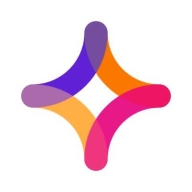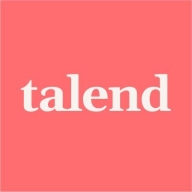

Talend Data Management Platform and Jitterbit Harmony are both strong contenders in the data integration space. Talend shines with its comprehensive features, while Jitterbit stands out for its user-friendly interface and quick deployment.
Features: Talend Data Management Platform provides advanced data transformation, real-time analytics, and extensive customization options. It offers a central repository for enterprise metadata and robust monitoring capabilities. Jitterbit Harmony emphasizes cloud-based connectivity, intuitive integration processes, and seamless data mapping between files and databases. It provides a fluid user interface with point-and-click wizards and pre-built Salesforce connectors.
Room for Improvement: Talend could enhance its user interface and shorten the learning curve for new users. It may also benefit from streamlining its setup process and improving cloud integration tools. Jitterbit Harmony could expand its data transformation capabilities and offer more extensive customization options. Increasing support for on-premise deployment and offering more detailed analytics could also improve its offerings.
Ease of Deployment and Customer Service: Talend offers flexible deployment options but involves a complex setup that requires specialized knowledge. Jitterbit Harmony provides a smoother deployment experience with responsive support services, catering to organizations seeking fast integration without requiring extensive technical expertise.
Pricing and ROI: Talend Data Management Platform typically involves a higher upfront investment. However, its robust feature set can lead to substantial long-term value. Jitterbit Harmony offers competitive pricing with quicker time to value, appealing to mid-sized companies or projects with tighter budgets. Its straightforward deployment and integration often deliver faster returns on investment.
We actually achieved the first 18 months worth of work in the first six months.
We have not encountered many issues with remote engines, and the interfaces are properly developed.
On the flip side, that is one of its amazing strengths, as you are not locked into a very rigid way of doing something.
Data management could also encompass APIs and real-time streaming data integration.
Having access to Talend support directly from TNC proved quite beneficial.
| Product | Market Share (%) |
|---|---|
| Talend Data Management Platform | 1.1% |
| Jitterbit Harmony | 0.6% |
| Other | 98.3% |


| Company Size | Count |
|---|---|
| Small Business | 8 |
| Midsize Enterprise | 3 |
| Large Enterprise | 1 |
| Company Size | Count |
|---|---|
| Small Business | 9 |
| Midsize Enterprise | 5 |
| Large Enterprise | 8 |
Jitterbit Harmony offers an advanced integration platform that simplifies data transformation, helps users quickly connect apps, and automates workflows, streamlining complex business processes efficiently.
Designed to meet the high demands of modern businesses, Jitterbit Harmony enables seamless integration across cloud and on-premise environments. By leveraging its powerful tools and user-friendly design, users can accelerate innovation, reduce operational costs, and enhance productivity. It bridges the gap between traditional and emerging technologies, ensuring organizations can adapt quickly to market changes and remain competitive.
What are the key features of Jitterbit Harmony?Jitterbit Harmony finds its application across numerous industries, from enhancing data integration in the healthcare sector to optimizing supply chain logistics in manufacturing. It supports financial institutions by improving transaction processing and facilitates real-time data connectivity in retail environments, making it a versatile choice for diverse industries looking to innovate rapidly.
We monitor all Data Integration reviews to prevent fraudulent reviews and keep review quality high. We do not post reviews by company employees or direct competitors. We validate each review for authenticity via cross-reference with LinkedIn, and personal follow-up with the reviewer when necessary.